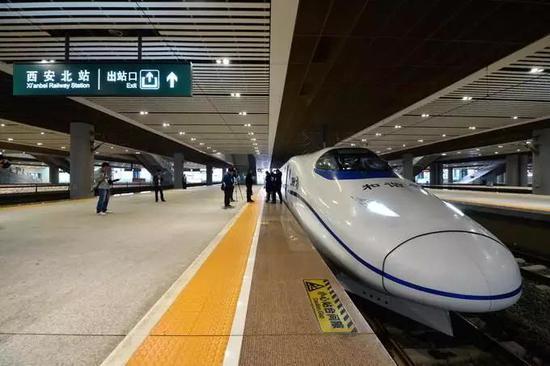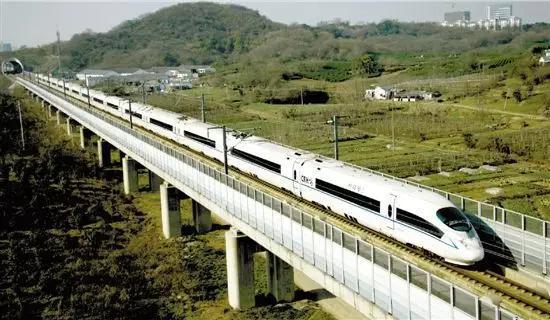

China’s high-speed railways are helping more remote and poor areas to strike it rich by offering opportunities for area resources to go into the national market, the Xinhua-run Economic Information Daily reported on Feb. 5.

Wufu Mountain, located in Shangrao County, east China’s Jiangxi Province, boasts honey and beautiful natural scenery. However, due to poor transportation, the region has been experiencing slow economic development.
Thanks to the Hefei-Fujian high-speed railway which started to run from June 2015, people of the region are gradually becoming rich.

He Jinwen, owner of an agritourism business, noted that more and more tourists are taking the high-speed trains to the region, bringing him an income of 200,000 yuan ($31,749) a year.
The Jiujiang-Jingdezhen-Quzhou railway line, which opened in late 2017 in Jiangxi Province, connects many famous mountains, lakes, cities, and villages.
Li Yang, a ceramic enthusiast, said that it used to take about 10 hours for him to get to Jingdezhen, known as the “Porcelain Capital of the World.” Now it only takes two and a half hours.
Owing to convenience of the high-speed rail, Wuyuan County has received 21 million tourists in 2017, up 20 percent on year-on-year basis.
In addition, the Lanzhou-Xinjiang high-speed railway not only boosts the economy of cities along the rail, but also helps poverty-stricken areas in northwest China’s Xinjiang Uygur Autonomous Region become rich. More and more agricultural products and fruits from the remote areas are being sold across the nation through the railway.
The opening of the railway also injected new vigor into tourism of the region.
Statistics show that Xinjiang accepted 107 million tourists last year, a year-on-year increase of 32.4 percent, creating a tourist income of 182.2 billion yuan.
 Fire brigade in Shanghai holds group wedding
Fire brigade in Shanghai holds group wedding Tourists enjoy ice sculptures in Datan Town, north China
Tourists enjoy ice sculptures in Datan Town, north China Sunset scenery of Dayan Pagoda in Xi'an
Sunset scenery of Dayan Pagoda in Xi'an Tourists have fun at scenic spot in Nanlong Town, NW China
Tourists have fun at scenic spot in Nanlong Town, NW China Harbin attracts tourists by making best use of ice in winter
Harbin attracts tourists by making best use of ice in winter In pics: FIS Alpine Ski Women's World Cup Slalom
In pics: FIS Alpine Ski Women's World Cup Slalom Black-necked cranes rest at reservoir in Lhunzhub County, Lhasa
Black-necked cranes rest at reservoir in Lhunzhub County, Lhasa China's FAST telescope will be available to foreign scientists in April
China's FAST telescope will be available to foreign scientists in April "She power" plays indispensable role in poverty alleviation
"She power" plays indispensable role in poverty alleviation Top 10 world news events of People's Daily in 2020
Top 10 world news events of People's Daily in 2020 Top 10 China news events of People's Daily in 2020
Top 10 China news events of People's Daily in 2020 Top 10 media buzzwords of 2020
Top 10 media buzzwords of 2020 Year-ender:10 major tourism stories of 2020
Year-ender:10 major tourism stories of 2020 No interference in Venezuelan issues
No interference in Venezuelan issues
 Biz prepares for trade spat
Biz prepares for trade spat
 Broadcasting Continent
Broadcasting Continent Australia wins Chinese CEOs as US loses
Australia wins Chinese CEOs as US loses